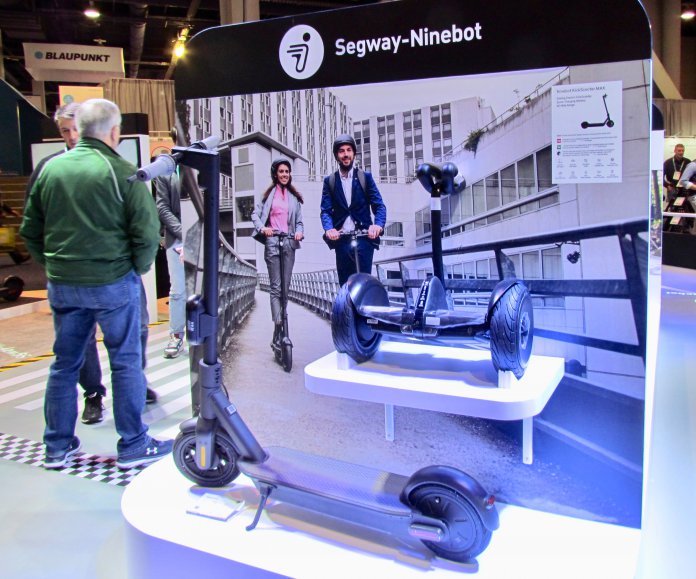Paul Blart’s going to have to find a new set of wheels. The Segway PT that Kevin James rode in the 2009 movie Paul Blart: Mall Cop is going out of production as of July 15, several media sources have been informed by the company.
In a 20-year production run, Segway-Ninebot has sold fewer than 150,000 of the self-balancing 2-wheeled vehicles, in part because they cost around $5,000 each.
So how long before we’ll be seeing some of those units rolling onto auction blocks at collector vehicle sales? Remember, when he unveiled his invention, Dean Kamen said the Segway would be to the car what the car was to the horse and buggy.

Since introducing the revolutionary transportation device, Segway-Ninebot (Kamen sold Segway in 2009) has gone on to use its self-balancing technology — the company holds 1,000 patents on such technology — to create a variety of devices for moving people from place to place; Fast Company reports that the Segway PT is responsible for only 1.5 percent of the revenue of Segway-Ninebot (the company’s name under yet another owner).
The man who purchased Segway from Kamen in 2009 was Jimi Heselden, a 62-year-old British entrepreneur who only months later was riding an X2 Adventure off-road version of the Segway when he tumbled off a cliff into a river.
But Heselden wasn’t the first person to die from a fall from a Segway. In 2004, Ron Huber fell backward off a Segway at a go-kart race and died later of his head injuries.
While I found it interesting to see the array of Segway-Ninebot products at the CES (Consumer Electronics Show) earlier this year in Las Vegas, I’m saddened by the demise of the original PT, which I found to be perhaps the most intuitive device I’ve ever experienced.

I think it was in 2000 (or maybe it was even in 1999?) when I was covering Michelin’s Challenge Bibendum, the global showcase for sustainable transportation technology, that there was a tent into which I was invited to see a revolutionary new device, which turned out to be the Segway PT prototype.
Kamen, the inventor, was there demonstrating, and he invited me and other journalists to try the machine for ourselves.
I remember him saying that you didn’t need to actually lean in a direction for the device to move, but you simply needed to think about where you wanted to go and the machine would be able to pick up on the oh-so-subtle shift in your posture and would head in that direction.
Doubtful, to say the least, I climbed aboard, thought “forward” and, much to my surprise, that’s where the machine took me. Steering was done by the handlebars and that may have been how you stopped as well. I remember enjoying the experience and not wanting to stop.
I also remember wishing that Kamen and his crew would get a contract to redesign the switchgear in cars, on washing machines, home audio setups and other devices to make those much more intuitive.
The PT’s quality is in part responsible for its demise. As Judy Cai, president of Segway, told Fast Company: “We tried analyzing, how come sales cannot go up quickly? One reason, I hate to say, is the quality of it, how durable it is.
“I talk to customers riding [an old] unit. It doesn’t look good because it’s been on the road 12 years. It has 100,000 miles on it. But the machine itself runs very well. And so when you try to sell new units [to those customers] . . . unfortunately, it does hurt us.”
Another factor was a design that hasn’t evolved very much.
“The world got dozens of new iPods and iPhone since 2001,” Fast Company notes, “while the Segway never really changed.
“Still,” Fast Company adds, “Segway’s legacy lives on, as the era of urban mobility that Kamen teased starts to take shape, with e-scooters and e-bikes taking over cities worldwide.”





